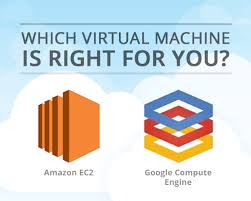What are Virtual Machines..?

A virtual machine uses a combination of software and your existing computer to emulate additional computers, all within one physical device.
Virtual machines provide the ability to emulate a separate operating system (the guest), and therefore a separate computer, from right within your existing OS (the host). This independent instance appears in its own window and is typically isolated as a completely standalone environment, although interactivity between guest and host is often permitted for tasks such as file transfers.
Everyday Reasons For Using a Virtual Machine
There are many reasons why you may want to run a VM, including developing or testing software on various platforms without actually utilizing a second device. Another purpose could be gaining access to applications that are native to an operating system different than your own. An example of this would be wanting to play a game exclusive to Windows when all you have is a Mac.
In addition, VMs provide a level of flexibility in terms of experimenting that is not always feasible on your main, host operating system. Most VM software allows you to take snapshots of the guest OS, which you can later revert back to if something were to go wrong such as key files becoming corrupted or even a malware infection taking place.
Why Businesses Might Use Virtual Machines
On a grander, non-personal scale, many organizations deploy and maintain several virtual machines.
Rather than having a large number of individual
computers running at all times, companies opt to have a bunch of VMs
hosted on a much smaller subset of powerful servers, saving money not
only on physical space but also on electricity and maintenance. These
VMs can be controlled from a single administrative interface and made
accessible to employees from their own remote workstations, often spread
out across multiple geographical locations.
Because of the isolated nature of the virtual
machine instances, companies can even allow users to access their
corporate networks via this technology on their own personal
computers—adding to both flexibility and cost savings.
Full control is another reason that they are an attractive
alternative for admins, as each VM can be manipulated, started and
stopped instantly with just a simple mouse click or command line entry.
Couple that with real-time monitoring ability and advanced security
oversight and virtual machines become quite a viable option.Common Limitations of Virtual Machines
While VMs are certainly useful, there are notable limitations that need to be understood beforehand so that your performance expectations are realistic. Even if the device hosting the VM contains powerful hardware, the virtual instance itself may run significantly slower than it would on its own independent computer. Advancements in hardware support within VMs have come a long way in recent years, but the fact remains that this limitation will never be completely eliminated.Another obvious limitation is cost. Aside from the fees associated with some virtual machine software, installing and running an operating system – even within a VM – still requires a license or other authentication method in some instances, depending on the particular OS.

For example, running a guest instance of Windows 10
requires a valid license key just as it would if you were installing the
operating system on an actual PC. While a virtual solution is typically
cheaper in most cases than having to purchase additional physical
machines, the costs can add up when you require a larger-scale rollout.
Other potential limitations to consider would be lack of support for
certain hardware components as well as possible network constraints.
With all of that said, as long as you do your research and have
realistic expectations going in, implementing virtual machines in your
home or business environment could be a real game changer.


Comments
Post a Comment